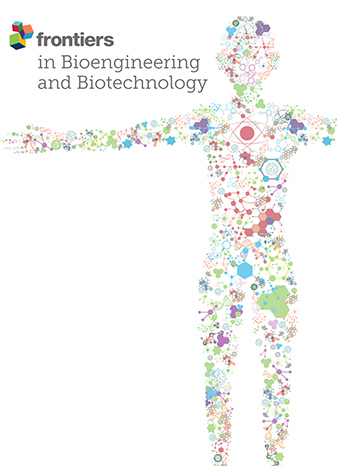微生物衍生表面活性剂:管理环境污染物的生态友好、创新和有效方法
IF 4.3
3区 工程技术
Q1 BIOTECHNOLOGY & APPLIED MICROBIOLOGY
引用次数: 0
摘要
自然环境经常受到疏水性污染物的污染,例如长链碳氢化合物、石化产品、溢油、杀虫剂和重金属。疏水性污染物毒性大、降解速度慢、溶解度低,对环境和人类健康构成严重威胁。传统化学表面活性剂具有毒性,因此限制了其在制药和化妆品行业的应用。相比之下,由各种微生物合成的生物表面活性剂因其无毒性和经济性而被认为优于化学表面活性剂。一些生物表面活性剂可以承受较大范围的温度和 pH 值波动。最近,生物表面活性剂已成为一种创新的生物分子,不仅可用于增溶,还可用于生物降解重金属、杀虫剂、石油碳氢化合物和溢油等环境污染物。生物表面活性剂可用作乳化剂、分散稳定剂和润湿剂,这一点已得到充分证实。生物表面活性剂具有两亲性,可以在两个不相溶表面分布后降低界面表面张力,从而提高疏水性污染物(如石油碳氢化合物和溢油)的溶解度。然而,使用生物表面活性剂修复污染物会受到温度、pH 值、介质成分、搅拌速度和生产生物表面活性剂所选微生物的很大影响。本综述简要讨论了微生物合成生物表面活性剂的最新进展、影响生产的因素及其在修复疏水性环境污染物中的应用。此外,还从利用废物生产生物表面活性剂和生物表面活性剂生产的全球经济方面讨论了循环生物经济的最新进展。本文章由计算机程序翻译,如有差异,请以英文原文为准。
Microbially derived surfactants: an ecofriendly, innovative, and effective approach for managing environmental contaminants
The natural environment is often contaminated with hydrophobic pollutants such as long-chain hydrocarbons, petrochemicals, oil spills, pesticides, and heavy metals. Hydrophobic pollutants with a toxic nature, slow degradation rates, and low solubility pose serious threats to the environment and human health. Decontamination based on conventional chemical surfactants has been found to be toxic, thereby limiting its application in pharmaceutical and cosmetic industries. In contrast, biosurfactants synthesized by various microbial species have been considered superior to chemical counterparts due to their non-toxic and economical nature. Some biosurfactants can withstand a wide range of fluctuations in temperature and pH. Recently, biosurfactants have emerged as innovative biomolecules not only for solubilization but also for the biodegradation of environmental pollutants such as heavy metals, pesticides, petroleum hydrocarbons, and oil spills. Biosurfactants have been well documented to function as emulsifiers, dispersion stabilizers, and wetting agents. The amphiphilic nature of biosurfactants has the potential to enhance the solubility of hydrophobic pollutants such as petroleum hydrocarbons and oil spills by reducing interfacial surface tension after distribution in two immiscible surfaces. However, the remediation of contaminants using biosurfactants is affected considerably by temperature, pH, media composition, stirring rate, and microorganisms selected for biosurfactant production. The present review has briefly discussed the current advancements in microbially synthesized biosurfactants, factors affecting production, and their application in the remediation of environmental contaminants of a hydrophobic nature. In addition, the latest aspect of the circular bioeconomy is discussed in terms of generating biosurfactants from waste and the global economic aspects of biosurfactant production.
求助全文
通过发布文献求助,成功后即可免费获取论文全文。
去求助
来源期刊

Frontiers in Bioengineering and Biotechnology
Chemical Engineering-Bioengineering
CiteScore
8.30
自引率
5.30%
发文量
2270
审稿时长
12 weeks
期刊介绍:
The translation of new discoveries in medicine to clinical routine has never been easy. During the second half of the last century, thanks to the progress in chemistry, biochemistry and pharmacology, we have seen the development and the application of a large number of drugs and devices aimed at the treatment of symptoms, blocking unwanted pathways and, in the case of infectious diseases, fighting the micro-organisms responsible. However, we are facing, today, a dramatic change in the therapeutic approach to pathologies and diseases. Indeed, the challenge of the present and the next decade is to fully restore the physiological status of the diseased organism and to completely regenerate tissue and organs when they are so seriously affected that treatments cannot be limited to the repression of symptoms or to the repair of damage. This is being made possible thanks to the major developments made in basic cell and molecular biology, including stem cell science, growth factor delivery, gene isolation and transfection, the advances in bioengineering and nanotechnology, including development of new biomaterials, biofabrication technologies and use of bioreactors, and the big improvements in diagnostic tools and imaging of cells, tissues and organs.
In today`s world, an enhancement of communication between multidisciplinary experts, together with the promotion of joint projects and close collaborations among scientists, engineers, industry people, regulatory agencies and physicians are absolute requirements for the success of any attempt to develop and clinically apply a new biological therapy or an innovative device involving the collective use of biomaterials, cells and/or bioactive molecules. “Frontiers in Bioengineering and Biotechnology” aspires to be a forum for all people involved in the process by bridging the gap too often existing between a discovery in the basic sciences and its clinical application.
 求助内容:
求助内容: 应助结果提醒方式:
应助结果提醒方式:


